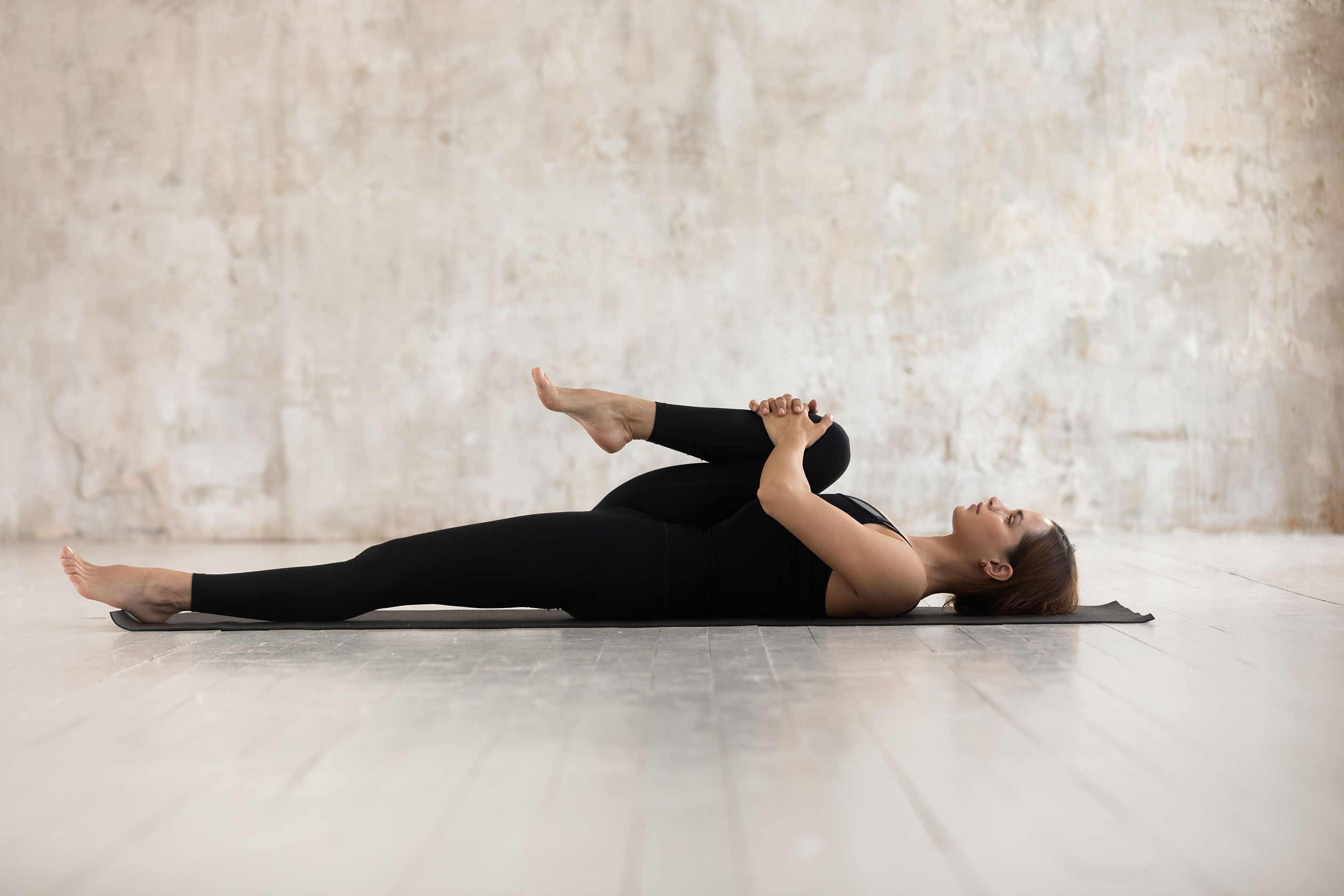Back pain is an extremely common condition, affecting eight out of ten people at some point in their lives, and is caused by a variety of factors including poor posture, a sedentary lifestyle, and exercise-related injuries. Stretching and strengthening your back, shoulder, and neck muscles are crucial to recovery and prevention of future tension. Ready to fight back against your back pain? Release the built-up tension in your body by including these easy movements into your daily routine.
Warm up first
Stretching can restore flexibility, improve range of motion, and boost blood flow, all of which can eliminate pain. But, before targeting your back, it’s important to loosen your muscles. If you stretch stiff muscles, you may hurt yourself, straining the muscles farther than they’re able to. Jog in place for a few minutes or do some high knees to get your blood pumping before the stretching begins. Once you’re limber and ready, try out a few of these exercises below, and be sure to spend at least 30 seconds to two minutes on every move for the best results.
Overhead arm reach
For this stretch, all you need is a comfortable chair that supports good posture. Sit facing forward with your feet on the ground. Raise your right arm over your head and slowly reach to the left. You should feel this stretch in your shoulder and upper back. Return to your starting position, repeat five times, then switch to the left arm.
Neck rolls
Sit upright with your shoulders down and hands on your lap. Lean your head to the right, so your right ear is over your shoulder. Move your chin down toward your chest as you slowly roll your head over to the left until your left ear is over your left shoulder. Reverse direction, and repeat this movement five to ten times.
Shoulder roll
Stand up straight with your arms at your sides. Roll your shoulders backward making a circle. Exaggerated movements will ensure a deeper stretch, so focus on making five large, slow circles. Repeat the roll forward five times to complete one set. Aim for two to three sets to relieve soreness in your shoulders and upper back.
Chair rotation
To target your whole back, from the base of your neck to your tailbone, add the chair rotation into your stretching routine. Begin sitting in a chair sideways so your right side is against the back of the chair. Keep your legs in place while you rotate your upper body to the right. Use the back of the chair to push yourself further, deepening the stretch. Hold this position for ten seconds, then repeat three times on each side.

Knee to chest
This next movement will relieve tension in the lower back and feels great after a day of not-so-great posture. To start, lay on your back on a carpeted floor or a yoga mat. Bend your right leg, grab the knee, and pull it toward your chest. Hold this position for ten seconds, then release, returning to the starting position. Repeat with the left leg, and be sure to stretch both sides at least three times.
Child’s pose
Position yourself on your hands and knees, being sure to find a soft surface or yoga mat to protect your knees. Bring your big toes together and spread your knees as far apart as they’ll comfortably go. Sit back on your heels with your arms extended overhead, then bend at the waist and bring your torso forward toward the floor. Allow your forehead to touch the mat and sink into the stretch. Hold this position for 15 seconds and repeat as needed.
Cat-cow
Begin on all fours with hands in line under your shoulders and knees under your hips. Like the child’s pose, be sure to complete this movement on a yoga mat or other soft surface. Next, round your back, pull your navel toward your spine, tuck your pelvis, and relax your neck. This is the cat part of the stretch, where your body should look like a cat with its back arched. Hold this position for three to five seconds before returning to a neutral position. Then, let your back sink toward the floor while you look toward the ceiling. Hold this cow pose for three to five seconds as well. Repeat this five times.
Butterfly wings
Butterfly wing exercises work well in conjunction with neck rolls to strengthen your pectoral and rhomboid muscles. To begin, sit in a chair with your hands on your shoulders and your elbows pointing outward. Without moving your hands, draw your elbows together in front of you, so they touch. Then, move your arms back to their original position. Your arms should resemble a butterfly flapping its wings. Repeat this for 30 seconds to a minute for best results.
Upper back stretches can help relieve your pain and strengthen your muscles to prevent future injury. In many situations, you can successfully treat back and neck pain at home using the stretches above. However, if your pain endures or becomes worse, speak to a healthcare professional.
If you’re looking for more solutions, you may want to check out our list of foam-roller exercises for back pain.




